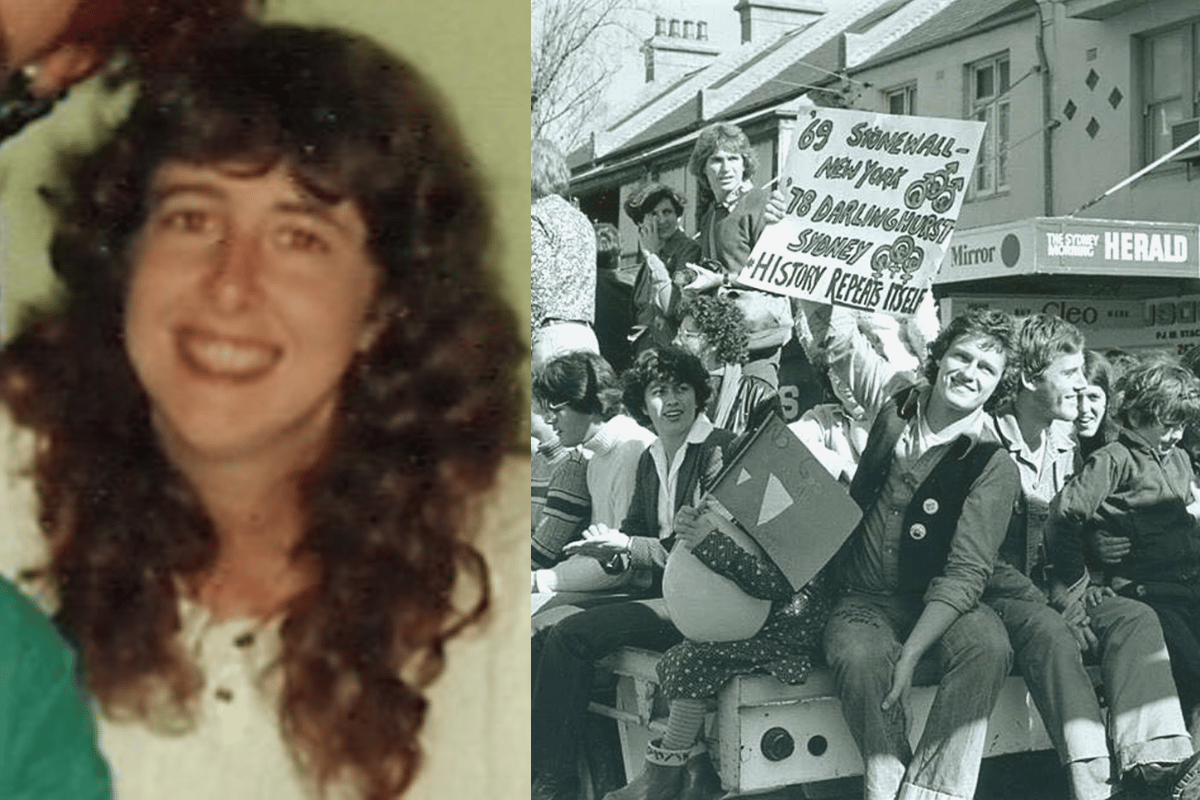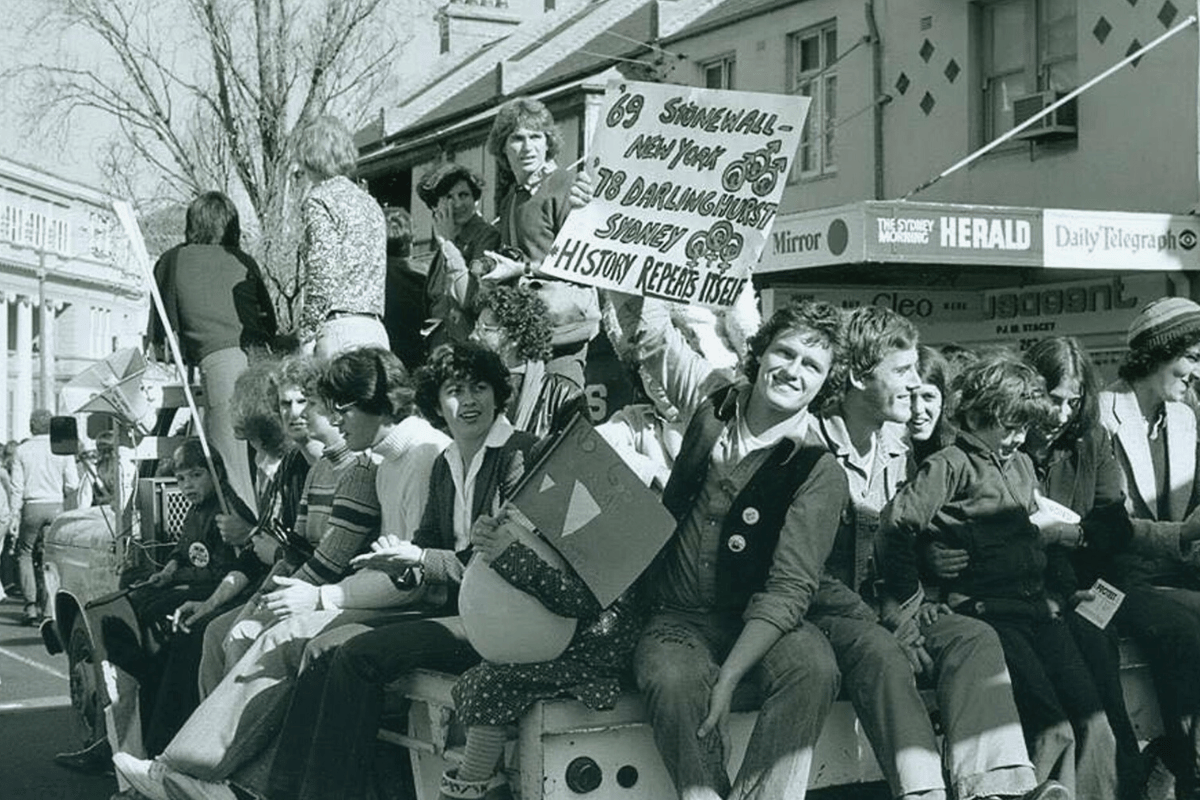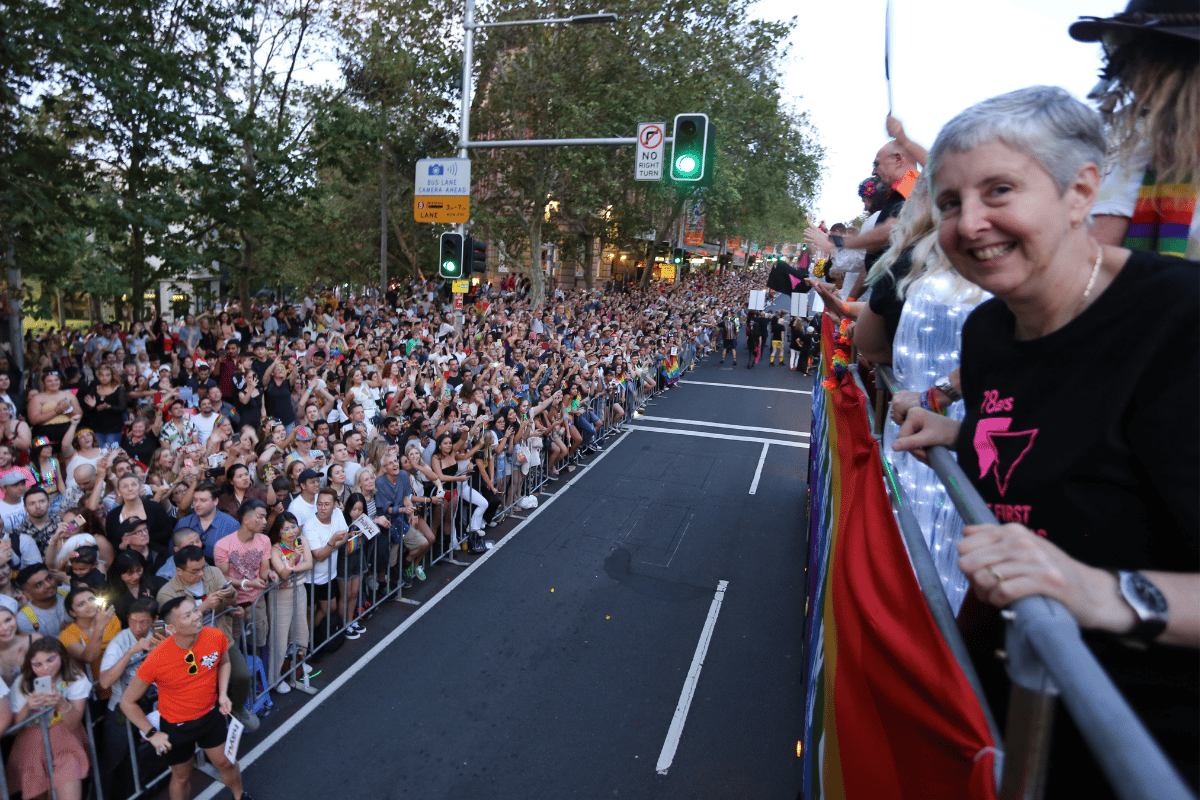
When Sandra Gobbo attended the first Mardi Gras on June 24, 1978, she was expecting a fun event marked by celebration and gay pride.
But what she and hundreds of others experienced that night was an inhumane attack based on who they were and what they stood for.
***
At the time, Sandra was 20 and had recently moved to Sydney from Melbourne.
Activism was something she was passionate about as she was previously an organiser for the Australian Union of Students. But when it came to LGBTQIA+ issues, Sandra wasn't yet a vocal, public advocate.
Around the age of 16, Sandra realised she was gay. It wasn't something she felt comfortable telling many people straight away.
"I was raised in a conservative Catholic family and I hadn't told them. I had a couple of attempted conversations with my dad. He didn't register that when I brought girls over, they weren't actually my friend but something more," Sandra explained to Mamamia.
But while living in Sydney, Sandra found people who were going through similar experiences as her and became romantically involved with her flatmate Maree.
Watch the trailer for Riot, an ABC film that explores the origins of the activism that led to the world's first Gay and Lesbian Mardi Gras. Post continues below.



Top Comments